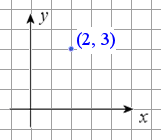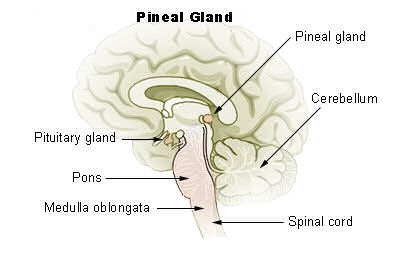The IntMath Newsletter - 10 Aug 2008
By Murray Bourne, 10 Aug 2008
In this Newsletter:
1. Finding Square Roots - without a calculator
2. The Story of Rene Descartes
3. From the math blog
4. Math Study Tip - Time
1. Finding Square Roots - without a calculator
[This topic was suggested by a reader].
Mathematics is not some static stuff that comes from a textbook. It has been developed over thousands of years as a powerful tool for solving problems.
Our understanding of mathematics improves if we see how things were solved in the past.
Ever wondered how people found square roots before they had calculators? Let's look at one method that was in common use up until about 100 years ago, called the "Babylonian method".
This method involves iteration. Iteration means that we start with an approximation and substitute it into a formula. The result is a better approximation. We take that result and substitute it into our formula once more, giving us an even better approximation. We keep going until the accuracy is as good as we need.
These are the steps that we can use to find the square root of a number:
(a) Guess an answer,
(b) Divide the number by the guess, then
(c) Average the numbers in steps (a) and (b).
We can write that as a formula:

x is the number whose square root we are finding, and ri is our guess.
Example: Find the square root of 5
A good first guess for √5 is r0 = 3. That's step (a). Then step (b) is divide 5 by 3 then step (c) is average the resulting numbers. This is how it looks:

This is a better approximation. We now put that result back into our formula, giving us r2:

Notice that I used the fraction from the first step and not the decimal (this gives better accuracy).
Now for r3:

One more, r4:

This is actually a very good approximation after just 4 iteration steps. The value is correct to 9 decimal places. Here is the first 75 decimal places of the square root of 5 (if anyone cares):
√5 = 2.2360679774 9978969640 9173668731 2762354406 1835961152 5724270897 2454105209 25638.
Iteration is an important concept in mathematics. For example, in calculus, Newton's Method is used to find roots of equations when there is no other way. Also, iteration is used in creating fractals.

A fractal image, found using iteration of complex numbers.
2. The Story of Rene Descartes
The brains of great people have held a fascination for scientists for hundreds of years. What kind of brain does a brilliant person have? Is it large size? Is it a special shape that makes a brain brilliant?
Rene Descartes was a French mathematician and philosopher who lived from 1596 to 1650. The owner of one of the most brilliant minds in history had a strange end - his skull disappeared.
First, let's see some of Descartes' achievements.
(a) Descartes invented analytic geometry
The "cartesian" coordinate system is named after Rene Descartes. His system of representing the relationship between 2 variables on a rectangular grid (using x- and y-axes) was an extremely valuable invention and it advanced math and science considerably.

The coordinate system was an important step leading to the development of calculus by Newton and Leibniz a few decades later.
(b) Descartes developed a theory of knowledge
The most famous quote arising from Descartes' theory is "I think, therefore I am." (or more precisely: "I doubt, therefore I think, therefore I am"). In simple English, the phrase means that if someone is capable of wondering whether or not he exists, that proves that he does actually exist.
(c) Descartes believed that the human mind (soul) was not part of the body
The implication of this view is that thinking did not go on anywhere in the body. According to Descartes, the mind interacted with the body in the pineal gland (a small blob in the brain named after the pine nut).

Image source.
Now we know that the pineal gland regulates melatonin, which is the hormone that regulates sleep.
Descartes believed that only humans had a soul (mind) and therefore were the only creatures that felt pain. His view led to cruel experiments on live animals. (Such experiments became common in Europe but were abandoned during the Enlightenment, 100 years later).
The Stolen Skull
In the time of Descartes in the early 17th century, very little was known about the human brain. And before that, there were many strange views about the brain.
The Egyptians thought that the brain did 'nothing important' and they believed that the heart was the center of intelligence and emotions. (This view survives to this day in sayings like "I love you with all my heart".)
The Babylonians thought all the action of mind and emotion happened in the liver. (Can you imagine saying "I love you with all my liver"?). The Greek Aristotle thought the brain was just a radiator for the body's heat.
It became common to "harvest" the brains of great people after they died as a way to answer questions like, "Do brilliant people have large brains?" and "What brain shape gives its owner the best intelligence?".
Brain researchers were a bit late to harvest Descartes' brain, but they got his skull 17 years after his death. They were shocked to find that it was quite small. Descartes' skull actually disappeared for some time and while there is a skull with his name on it in Paris' Musee de l'Homme (Museum of Man), it may not be his at all.
Most of us have brains that have a mass of about 1.3 kg. It is not so much brain mass that is important for intelligence, but the relative size of different parts of the brain. For example, Einstein's brain had larger than normal parietal lobes (the area just above and behind his ears), and it is believed that this gave him his advanced mathematical abilities.
Descartes was very important in the story of math. I wonder where his real skull ended up?
3. From the Math Blog
1) Changing people's lives - with math
I received a delightful mail today from a lady who lives on an isolated island off Europe. She finds Interactive Mathematics a really valuable resource for teaching her daughter mathematics and for escaping the poverty trap.
2) Friday Math Movie - Stressed Out
There have been some high profile building and bridge collapses. Can we predict such disasters and fix the structures before there is a tragedy? Math to the rescue.
3) Math rendering in WordPress using WPMathPub
How do you enter math equations, fractions and the like into a blog? One way is to use images, but these can be fiddly and inconvenient. WPMathPub is a WordPress plugin that may be a solution.
4) High fuel costs affecting learning
The rapid increase in fuel prices is forcing a re-think on educational institutions. Can we afford to (and do we really need to) transport students around our cities when there are other options, which could possibly have better learning outcomes?
5) Girls as good as boys in math - or is it something else?
A recent study shows that girls are as good as boys in mathematics. But what did the study really reveal?
4. Math Study Tip - Time
Most of us are "time-poor" and complain that there are too many things to do each day. But have you thought about how to reduce distractions and to focus more?
Here are some things to try. I guarantee they will make you more productive.
(a) Set 2 or 3 realistic goals for the day: These might include finishing a math assignment; preparing for an exam or maybe writing a paper.
(b) Don't open your email first thing in the day: Those mails can wait. Most of them are junk and distract you from your main goals. Hold off on email until you have completed your other tasks.
(c) Don't multitask: Lots of students like to have the TV on, or maybe have a YouTube video playing, or several MSN screens demanding attention. Turn them all off until the main goals of the day are achieved.
One of our most precious commodities is time. Take control of it and you start to achieve what you really want.
Here's an interesting quote:
"Watches are so named as a reminder - if you don't watch carefully what you do with your time, it will slip away from you." ~Drew Sirtors
Have a good week.
See the 10 Comments below.
10 Aug 2008 at 9:54 pm [Comment permalink]
The Babylonian method is still how it's done. It's probably how your calculator and computer do it internally, using a carefully-chosen initial guess.
The first thing to note is that in your computer (and probably in your calculator too), numbers represented in scientific notation. On your computer, it's probably represented in binary, but the principle is the same in decimal.
In scientific notation, numbers are represented in the form m * 10^e, where m is between 1 and 10.
If e is even. Then sqrt(m * 10^e) = sqrt(m) * 10^(e/2).
If e is odd, then sqrt(m * 10^e) = sqrt(m) * 10^((e-1)/2) = sqrt(10).
Because sqrt(10) can be precomputed, the problem has been reduced to computing the square root of a number between 1 and 10 only. Because the range of numbers is known, if the initial guess is chosen carefully (e.g. fitting a polynomial to the function, or even using a constant like sqrt(5)), you can arrange things so that you only need to iterate a small fixed number of times to get the precision that you require.
11 Aug 2008 at 1:30 am [Comment permalink]
I'm one of the Dip Tech final sems student .
I love this IntMath very much cause it always relate our normal life with the Maths knowledge
I suggest we also can discuss some topics about Digital Signal Processing and Application on this newsletter.
This subject involved a lots of Maths and all the books are so dry to read .
All the best & thank you
11 Aug 2008 at 9:54 am [Comment permalink]
Speaking of the heart and the liver, did you know that (this isn't math but interesting) in Malay, people confuse heart for liver?
Usually in Malaysia most modern Malay terms are simply rearrangements of equivalent English words. So when they say "hati" (pronounced "hearty" as in "a hearty meal") they would like to mean "heart", but it actually means "liver"! (The correct Malay word for "heart" is "jandung".)
Malaysia boleh. >.<
Anyway, heardsay it's the National Day of Singapore so a belated happy National Day!
11 Aug 2008 at 3:21 pm [Comment permalink]
well another good newsletter.............
i just want that in the next coming newsletter please give tip,shortcuts for complex calculations like the one in this issue ,,,,,,,,these are really helpfull as the time we take & use a scientific calculator we can get the appox results instantly
12 Aug 2008 at 6:20 pm [Comment permalink]
Thank you for sending me such information. Keep on.
12 Aug 2008 at 7:56 pm [Comment permalink]
very very very nice
28 Aug 2008 at 10:06 pm [Comment permalink]
I seriously believe on ontological grounds that Descartes statement: " I think therefore I am" is backward. It should be:"I am therefore I think". For those who believe that there is a soul that occupies a body during life, it is the soul that thinks and keeps on thinking after the body and thus also the brain is dead. The brain is only a biomechanical aparatus that auto controls the body and gives expression to the living soul. Karl Jung believes strongly that God THINKS His creation, thus also you and me. Example: I think in my bed about something to make for my wifes birthday. I choose a banana hanger. I choose the kind of woods I would like to make it from. I design the shape of the banana hanger in my mind. The babana hanger does not exist yet! Next morning I go to my shop and shoose the right woods and tools and go to work. Voilá; there is the bananahanger in existence. After death I keep on thinking although my brains are rotting in the grave. " I think therefore I am!"
29 Aug 2008 at 3:14 am [Comment permalink]
Hi Johan and good to hear from you again.
Actually, Descartes' logic for this statement came across to me more as mathematical proof than a theological argument.
So your view is that you think whether you are alive or not. Hmmm - so reincarnation is a real possibility in your world view?
How about the rest of you - do we have a soul that exists before and after we are alive?
10 Sep 2008 at 4:03 am [Comment permalink]
I really benefited from this edition. Thanks.
I also want to request if Ican get references and more info on
the aspect of brain and intelligence. Again, thanks
8 Aug 2009 at 4:25 am [Comment permalink]
Yes Murray, --- In my ontology I tried to show that our material reality is only a carrier of our spiritual reality. Whether ones material reality is 4 dimensional or X dimensional it must at the end distroy itself. What keeps on developing is our spiritual reality. Whether,as the Axiom says, it is rock, plant, animal or man or anything in between. In the 4 reality quadrants there is always a working relationship between the realities that gives us the insurance of Being. Therefore the soul will always be there.